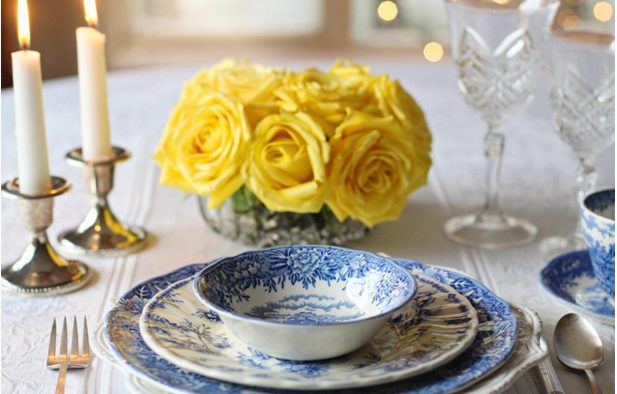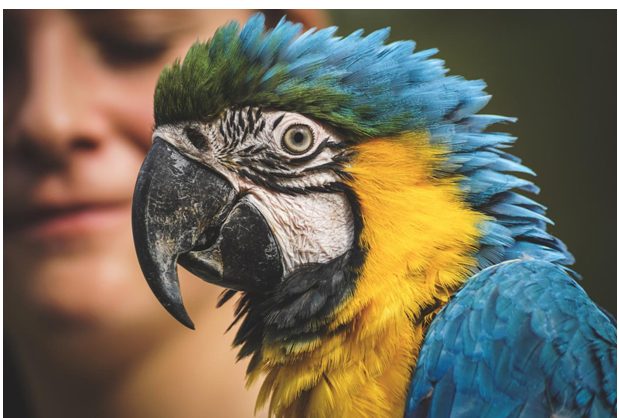With colors, there are some that are definitely more loved and well used than others. We all know the three primary colors of red, yellow and blue, and most of us will be familiar with the colors that result from mixing them.
In this guide, we will be answering the question of what color does blue and yellow make. We have a feeling that you will be very familiar with the color that these two colors create!
We will also cover how you can mix them, some practical uses for the color as well as how you can control the shades you end up with.
How you can mix blue and yellow?
To know how you can mix blue and yellow, you should first know what you will end up with. You may already know the answer to this, as blue and yellow form green when mixed together.
That is making it very basic, as it gets more involved when you start talking about different shades and tones. But we will definitely cover this and a lot more throughout the guide!
How you mix these colors depends heavily on the art medium you are working with. One of the most common would be mixing paint.
This can come in many forms, from watercolor to acrylic or maybe oil. You might be mixing paints for a wall color as well, though, so there are many applications.
It can also be practiced with other mediums like pastels or crayons, but the idea is always the same. You simply merge the two colors and mix them up well to get the new color.
Blue and yellow can also be used in design, whether it’s fashion or in advertisements. You can also think about pairing blue and yellow objects when decorating with furniture or appliances.
So, you can already see that there is more to mixing blue and yellow than just mixing the colors together. No matter what medium or format you may be working in, you will have many options and ways of going about it.
These are all things we will break down and go into much deeper detail in as we proceed through the guide.
The next question we will tackle involves whether blue and yellow are a good combination.
Are blue and yellow a good combination to mix together?
Before we get deeper into the aspects of mixing these colors, you may be wondering if it’s even worth the bother. That can depend on a few aspects, but the short answer is that it definitely can be!
When it comes to mixing blue and yellow to get green, it is definitely a good idea. Green is a really useful color to have in your paint collection as it can be used in natural settings and in more artificial subjects.
You’ll definitely want to put a bit of thought into the shades of blue and yellow that you use. This s true if you’re mixing the colors or simply pairing them.
When it comes to pairing them, blue and yellow can be a great combination, but they sometimes can clash a bit. If you want to pair them then you will need to try out different combinations.
Yellow is a warm color whereas blue is a cool color, so pairing them can be a bit tricky. When you get it right though, it can be stunning!
And then there is the matter of what you get when you mix them. We know that it is green you will land up with, and we can assure you that you will find plenty of uses for green.
We will cover some of the uses that green can have later on, but no matter what you are painting there is a good chance there will be some green somewhere.
However, to finish off this point we can safely say that in most circumstances blue and yellow are an excellent combo.
It may take a bit of experimenting and tweaking, but you can land up with some amazing results.
You can also influence the result by being prepared, so let’s look at some of the ways you can do just that.
What results you can expect?
So far, we have determined that blue and yellow will give you green, and also that the colors can complement each other. You may be wondering exactly what kind of result you may end up with, though.
The best way to find out it by just going for it and mixing the colors you have. So you can try out your favorite shades of blue and yellow and then mix them to see what happens.
For now, we won’t worry about trying to create a specific shade of green or anything like that. This step is just about seeing what happens when you mix the colors.
If you mix light shades of blue and yellow, you will land up with a lighter green. If you use a dark blue and a light yellow, then the green will likely be rather dark.
It all follows a pretty basic logic, and we will cover how you can directly influence the result later. When it comes to paint mixing, you can also benefit greatly by having something you can practice on.
This could be a sketchbook or an old piece of canvas. Basically anything you don’t mind messing up!
Before you start making specific shades, just try out some combos of various blue and yellows to see what happens. The more you experiment, the more you will get the hang of color shades and quantities.
Later when we try to mix specific colors we will also look at how you can incorporate colors other than blue and yellow. The process for mixing colors will be relatively simple no matter the medium.
Whether it’s oils, acrylic or maybe watercolors, you simply mix the paint together with your paintbrush. Try to make sure your brush is completely clean before you mix up the colors.
Otherwise, you might get bits of color you didn’t want in the mix. The quantities of colors you incorporate can make a big difference as well as the shades.
There is a bit of trial and error involved, but you will soon get the hang of it. Plus, there are ways you can influence the colors you will create as well as tweak them to be perfect for your needs.
Next, we will look at some of the many uses you can have with the mixture of blue and yellow.
Best uses for blue and yellow mixes
We have determined that blue and yellow makes green so far in this guide, but now that we know that, what can be done with it? The good news is that there are so many uses for this combination.
When we think of green, we will almost certainly think of nature. Any nature scene you see whether in a picture or in real life will almost definitely have green somewhere in the picture.
There are many natural things that you can use different shades of green on. Many leaves will display shades of green, and the same will be true for lots of different plants.
You will certainly want greens for things like grass as well. Some of these greens may have other tones like browns or yellows depending on how old or dry it is.
That is something we will cover in more detail in the final point of this guide. While green is really handy for nature scenes, it is also useful in many other contexts.
For example, many different objects and products will have green incorporated in them. This could be anything from appliances to dog bowls and anything else you can think of.
Sometimes, you can find furniture or houses that are green as well. So as you can see, you have many ways that you can use this color.
Even if you keep the colors blue and yellow separate, you can still pair them in some interesting ways. One of the most famous combos of blue and yellow would be on the flag of Ukraine.
These are colors that would need to be paired wisely, as they do not always go together. There are no absolute rules for pairing these colors, and you will need to go by your own preferences when pairing.
Now that you know a few of the ways to use blue and yellow, you can probably think of many more uses as well!
Now we will look at some of the ways that you can create your very own color combinations as well as how these can best suit your needs.

Lighter and darker blue and yellow mixes
Now that we have some uses for blue and yellow, we can cover how you can go about creating some shades and tones of your own. A big part of this is about experimenting to find out what works.
However, while some guesswork may be involved you can also make educated guesses about the outcome.
If you were painting a dark green watering can, then you would start out with darker blues and yellows.
If you mix two colors that you think will make a good combo and it still doesn’t look right, then you can tweak it. Maybe you could add a touch more blue or yellow depending on the color you’re aiming for.
The trick is to look very closely at whatever it is you’re trying to create. There are other colors that you can add as well.
White and black can be used to make the colors lighter or darker, respectively. This is something you will want to add cautiously, as it can overpower the colors.
Colors can also have some subtle tones you can incorporate. We used the example of a watering can earlier, but that would have a fairly flat coloring.
For dry grass, you may find that the greens have a yellowy element to them. For that mix, you would want to have more yellow than blue when creating your greens.
That is one example, but there are many different instances where you could add colors you may not expect.
The best thing you can do is look closely at whatever you’re trying to paint and try identify the individual colors.
It’s something that comes with practice, but try to think of the colors logically. Darker colors will make the mix darker and vice versa.
But most of all, you should consider the experimentation process of mixing the colors as a part of the fun.
When you are trying out different combinations, you should take note of the quantities of colors you add.
You wouldn’t want to find the exact color you needed and then discover that you can’t remember how to make it! These tips will come in handy no matter what mediums or techniques you decide to use.
You can create any colors you can imagine with the right tools and perseverance!
In summary
Now we have answered the question of what color does blue and yellow make. It results in some shade of green, and that is a color that opens up so many possibilities.
Whether it’s a nature scene or some kind of structure or object, you can use green for so many different subjects.
Even if you keep the blue and yellow separated, you can use the combination in so many designs.
You have everything you need now! With the tips in this guide, you can experiment and try out some different mixtures to match whatever it is you’re trying to paint.
We know you will create some amazing colors!



